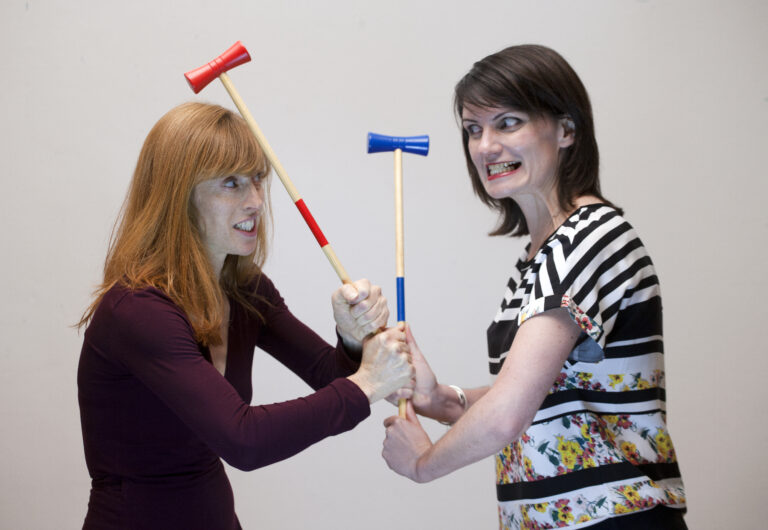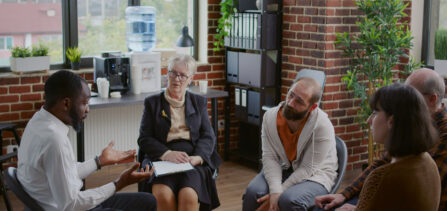
Conflict Resolution
When our world views are really different. Other people’s behaviour can not only seem puzzling, it can seem downright bizarre, confusing and most importantly… WRONG!
When no one wants to budge how do you get to a conflict resolution?
Let’s face it, there are people who just rub us up the wrong way. And there are people who we rub up the wrong way. There’s uneasiness between us, a mistrust, and unless we are careful, it’s easy to get into seemingly intractable conflict with those who grate on us (and vice versa).
Yet even within the category of conflict triggers, there’s one that I think tops the list – when our view of the world is different from someone else’s. This can be an issue in teams, which creates situations that line managers need to be able to resolve effectively.
Resolving Differences
Naturally, everyone, and I mean everyone, sees the world differently from everyone else, and yet in many if not most cases our differences aren’t so great that we can’t get along. Indeed, when the differences aren’t so obvious, we tend to focus on common ground and where we are similar. It’s how we can rub along with someone we may not fully agree with. When we’re more able and willing to resolve differences rather than fight over them, conflict resolution seems somehow easier.
Conflict Resolution? Over my Dead Body
Yet, when our worldviews are really different, therein lies the source of a lot of seemingly unresolvable conflict. Other people’s behaviour can not only seem puzzling, but it can also seem downright bizarre, confusing, incomprehensible, and most importantly… WRONG!
What happens, of course, is that because my view of the world is right and someone else’s view is wrong, and in turn, they think their view of the world is right and mine is wrong, the chances of ever resolving our differences are pretty slim.
Changing the Status Quo
Something has to shift. Dare I use the word compromise?
The problem with a lot of conflict situations such as these is that compromise can feel like giving in, admitting you were wrong, having to eat humble pie, etc. None of these feelings are particularly pleasant and it feels easier sometimes to take an ‘uncompromising’ stance and stick with it through thick and thin.
Their Point of View
What if a compromise wasn’t about giving in or admitting you were wrong? What if a compromise was about trying to see things from the other person’s point of view even for a brief while?
I can just see some people harrumphing with their arms crossed that they don’t want to see it from another point of view because they KNOW they’re right.
How to tell someone they are wrong
I really do know how tricky it can be to see the other person as anything but difficult when you are in the middle of a conflict with them. The great skill here is to be able to put your thoughts and feelings to one side, even for the shortest amount of time in order to try to see the world the way they do.
Conflict Resolution
Two Top Ways to Deal with Conflict.
How do you see the other person as anything but difficult then?
There are two things you can focus on if you want to resolve conflict:
1) You have to want to resolve it
2) You have to dip into your empathy well
There’s no point trying to resolve conflict if you are just giving lip service to wanting to resolve it. If, however, you do want to then it means you are well on your way to finding a way to see the situation from ‘their’ point of view.
Entrenched Positions
Not only that, if you genuinely want resolution to the conflict then the impetus has to come from you. Your goal is to help the other person shift from their entrenched position rather than standing your ground and waiting for them to make the first move.
If you couple that with empathy for what might be going on for the other person you are also in a much better position to build a bridge between you.
Using empathy to bridge-build means looking for something – anything – in their argument that you can agree with, where you can see they have made a valid point. You don’t have to agree with everything they are saying, just one thing. It doesn’t even have to be the main crux of their argument; it’s surprising how agreeing with even the smallest thing can calm someone down and get them to a place where they can enter into a conversation with you.
Bridge Building for Conflict Resolution
Here are your four steps to building a bridge:
1) Find something to agree with
2) Agree with it
3) Zip your lip and give the other person enough space to speak
4) Avoid coming back with a counter-argument (e.g. sentences that begin with ‘but’, ‘however’, etc.) and respond with empathy, even if it’s for the strength of their feelings
If a conversation doesn’t begin to emerge, start the process over again. Agreement is a very powerful tool because it lets the other person know you have heard them. Empathy also lets the other person know you care about resolving the difficulties between you.
There are some conflicts that just don’t get resolved; what I like about this technique is that at least you know you’ll have tried something different in order to get a difference, and hopefully better results.
Conflict Resolution Training
Impact Factory runs
Open Conflict Management Courses
Tailored Conflict Management Training
and personalised
One-to-One Conflict Management Coaching
for anyone who wants to improve the way they
Manage Conflict Resolution




